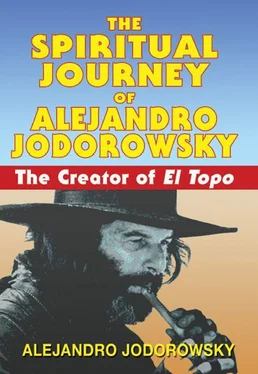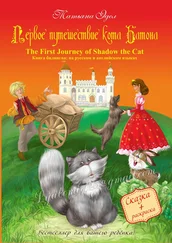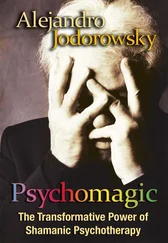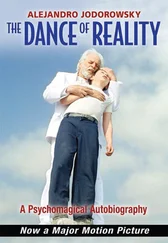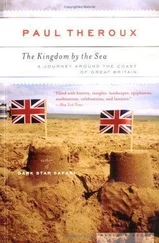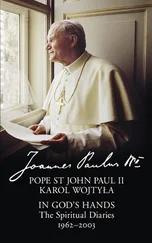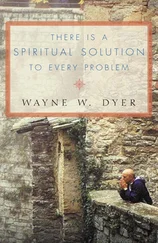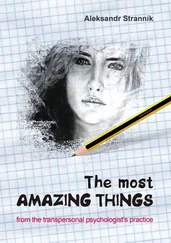I bowed to him to hide my shame, then I confessed: “I took that American guy’s Zen book and hid it. I’ve never opened it, but I’m dying of curiosity to see what is in it. If I read it, will I be betraying you?”
He burst out laughing. “We’ll read it together and write commentaries about it!” Then he told me the story of this mysterious book.
“This text is Gendai Sojizen Hyoron and actually amounts to a critique of pseudo-Zen. Appearing in 1916 and written by a mysterious provocateur, it set off a huge scandal among Zen monks. In the Rinzai school, koans and their answers had been transmitted secretly for generations, supposedly in a notebook written by Hakuin himself, the founder of the technique. A number of masters were furious at having these secrets published. They went to great lengths to confiscate and destroy all copies of it. But someone managed to keep one. It passed from hand to hand, and finally, in the 1960s, photocopies of it began to circulate with an English translation and commentary by the learned scholar Yoel Hoffmann.
“When I first visited that monastery in California, I realized that a number of monks were repeating phrases from it like parrots and imitating actions from it like monkeys. That is why I fled that place. Knowing the answer to a question is not the same as mastering it.”
Thus began a new phase of my life. Ejo proposed that we meet once a week at midnight — he chose this dark hour because it is symbolically the beginning of the new day’s conception. We engaged in conversations that literally began in the darkness and ended with the light of dawn. Every one of the koans was an immense challenge for me. I had to solve not only the riddles the masters offered but also the incomprehensible replies of their disciples. My reason was made to endure agony. I had to concentrate all my energy only to open a door in the wall of an absurd blind alley. To act or not to act? To follow reason or to follow intuition? Choose this one or that one? Trust others or myself?
Seeing how uncertain I was, Ejo quoted these words from Hakuin: “If you constantly explore a koan with total concentration, your self-image will be destroyed. An abyss will open beneath you, with no place to gain a foothold. You will confront death. You will feel a great fire burning in your chest. Then, suddenly, far away from body or mind, you and the koan will be one. You will go far and enter unmistakably into your own nature.” Ejo paused, and fanned himself for a while. Then, with a huge grin, he added: “Master Rinzai *8said: ‘All the sacred scriptures are nothing but toilet paper.’ Words won’t solve a koan.”
Yet as a person who has spent much of his life reading, finding an indescribable joy in books, I protested: “Wait just a moment, Ejo. You say that you can’t solve koans with words, but I’m sure that there are words that can dissolve them. Just as cobra venom can serve as an antidote to the poison of a bite, I believe that the poetic mind is capable of providing a kind of cleaning service: One luminous, poetic phrase could nullify the question that has no possible answer.”
Ejo laughed. “If you believe that, then you must think you can do it. You confuse poetry with reality, but I accept the challenge. Now give me a poetic response to the koan in the book that comes after the ‘sound of one hand’ and ‘Mu’: ‘What was your original face before your birth?’”
I concentrated intently and was about to say: “The same as my face after my death,” but I felt this would be falling into the trap of accepting the concept of birth and death by asserting that there is some face or individual form that we possess beyond this reality. So instead I exclaimed: “I don’t know! I didn’t have a mirror then!”
Ejo laughed again. “Quite ingenious. It is true that you have nullified the question with this exclamation — but what is the use of that? You remain a prisoner of having or not having. You accept that there is an original self, but you do not see it. Despite the fact that you managed to escape the duality of seer — seen, your words are still based on what you believe rather than on what you experience. In the traditional response given in the book, the disciple stands up and wordlessly places his two hands upon his chest. What do you think of that?”
“It seems to me that with this gesture he is saying: ‘There is no before, no after; I am here and now, that’s all I know. The question you ask has no answer.’”
“You are not going deeply enough. The disciple is not saying anything. He has withdrawn into himself, free from his hopes and illusions; his intellect is silenced. He feels this ‘here’ reach out to the whole universe; this ‘now’ include the totality of time, becoming eternal; and this individual ‘me’ dissolve into the cosmos. He has ceased to define, to believe himself master of his body, to judge, or to identify himself with his concepts as if they were real. He no longer allows himself to be carried away by the whirl of emotions and desires, for he understands that reality is not what he thinks or expects.
“As a response, the disciple stands up. In this way, he shows that he has accepted his own emptiness so that meditation is no longer necessary. Meditation is not the end, but the means. It is a mistake to confuse zazen (meditation) and awakening.”
I stood up, placed my hands upon my chest, and bowed. Ejo smiled and went into the kitchen, returning with two cups of green tea.
Now smiling myself, I said: “Ejo, this is not a Mexican drink. Enough of this Japanese culture!”
He answered immediately: “I have coffee too!” And he hurried to the kitchen again, returning quickly with two cups of steaming coffee. As we drank it in the light of dawn, whose rosy hue was staining the dying blue of the night, Ejo lit a cigarette and inhaled the smoke with sensual delight. Noticing my disapproving air, he quoted a text from the Advaita Vedanta tradition, attributed to the poet Dattatraya: “Do not worry about the master’s defects. If you are wise, you will know how to make use of the good in him. When you cross a river, it may be in a boat painted in ugly colors, but you are thankful to it for helping you cross to the other side.”
For two or three days after that, I was in a state of euphoria. I walked the streets of the city and saw it all with new eyes. Everything seemed luminous to me. With every step I took, I rose up on my toes. I must confess, I felt I was enlightened. “Why do I need to keep seeing Ejo? When you resolve one koan, you resolve them all. Koans are not different truths; they are only different roads that lead us to the one and only light.” But then two humiliating events occurred in rapid succession and cut me down to size.
A young man named Julio Castillo came to see me. “Master, I want you to teach me about light,” he said.
My mind was flooded with an uncontrollable vanity, which I dissimulated by adopting a saintly expression. So this intelligent-looking youth was somehow able to perceive the degree of my spiritual attainment! I gave my best explanation of the nature of empty mind, detachment from desire and ego, and unity with the cosmos, the here and now. I read quotes to him from Hui-Neng *9and showed him photos of monks in meditation. Then I sat down in the zazen position and invited him to do likewise — but Julio Castillo only stood with a pained and embarrassed expression.
“Excuse me, master, but I fear there is a misunderstanding,” he murmured. “I am a theater student. I have come to ask you not to save my soul, but to teach me about light — how you place your projectors to get your effects on stage.”
I felt so ridiculous that I started coughing to hide my embarrassment.
The evening of that same day, I went to a party given by a surrealist painter, Leonora Carrington. Her dazzling personality contrasted sharply with that of her husband, a man with a grave expression who rarely said anything and, when he did, uttered only a few syllables. In spite of the heat, he was wrapped in a thick, black overcoat, and a beret was pulled down to his ears. Like an observer from another planet, from a corner he watched the noisy party, where drink flowed copiously.
Читать дальше
